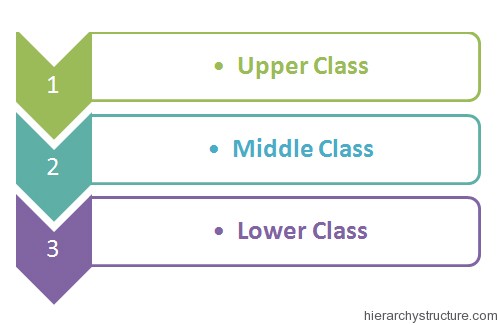A society can be defined as a group of people who are directly or indirectly dependent on each other for their needs. A large number of people are accumulated in a society but not all people do the same thing or perform the same job for their livelihood. There are different classes of people in the society depending on their economic status, educational status, racial status etc. which comprise the existing social class hierarchy.
Our main aim in this particular article is not to divide the society or create conflict by differentiating between the various classes but only to discuss the nomenclature of the classes that are prevalent in our society broadly known as social class hierarchy. After all, we are all human beings and the classes matter the least in forming the relationships between the human beings.
There are various factors, depending on which the social structure is divided into various classes in different ways. The first concept of classification is the economic status. The second concept of classification is the power; which is the ability to exert influence over other people. And, the third concept is prestige; which is all about the different recognitions received.
Let us discuss the common model of social classification which is based on the economic status. According to this model, the society is divided into three classes such as upper class, middle class and the lower class. Each class is characterized by lifestyle factors, interests and behaviors.

- Upper Class: The upper class belongs to the people who are wealthy and hold the greatest political power. The members of the upper class are born wealthy and the wealth passes from generation to generation in the form of estates. A small percentage of the society belongs to the upper class. The members of the upper class have their own business ventures and they own various financial organizations. They employ the middle class and lower class people for a substantial wage.
- Middle Class: The middle class constitutes the largest percentage of the total social population. The group falls between the lower class and the upper class; both in the social and economic status. They maintain their economical status by working for the various business firms. The workers of the middle class are also called as white collar workers.
- Lower Class: The people belonging to the lower class are economically insecure and they are employed in the low paying jobs for earning their livelihood. The lower class can further be divided into two types such as the people who are employed but lack financial security and the people who are homeless and unemployed for long term and receive the necessary welfare from the state government.
The above socio economic hierarchy has an effect on each and every area of life. Not all classes of people get access to all the necessary commodities and utilities. The above classes differ in terms of education, health and nutrition, employment, product and services, hobbies and spending patterns.
However, one important fact is that people of a particular class can move to another class. This mobility is generally exhibited in two forms. One can move up in the social status and one can move down too in the social status. This transition depends upon various factors such as achievement levels, will power to make a position in the society and the surrounding environment etc.
Know about Tribe Social Hierarchy.
